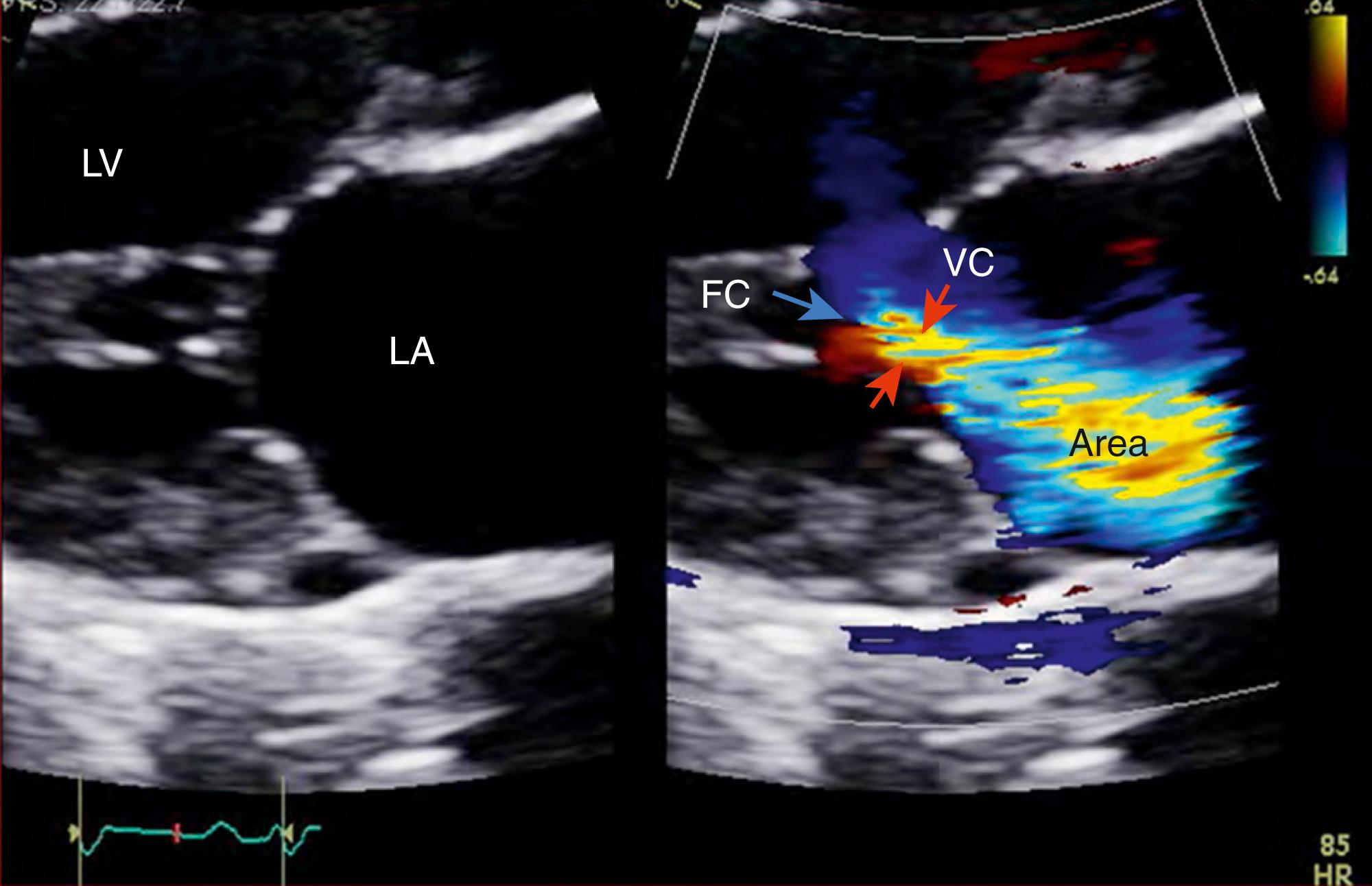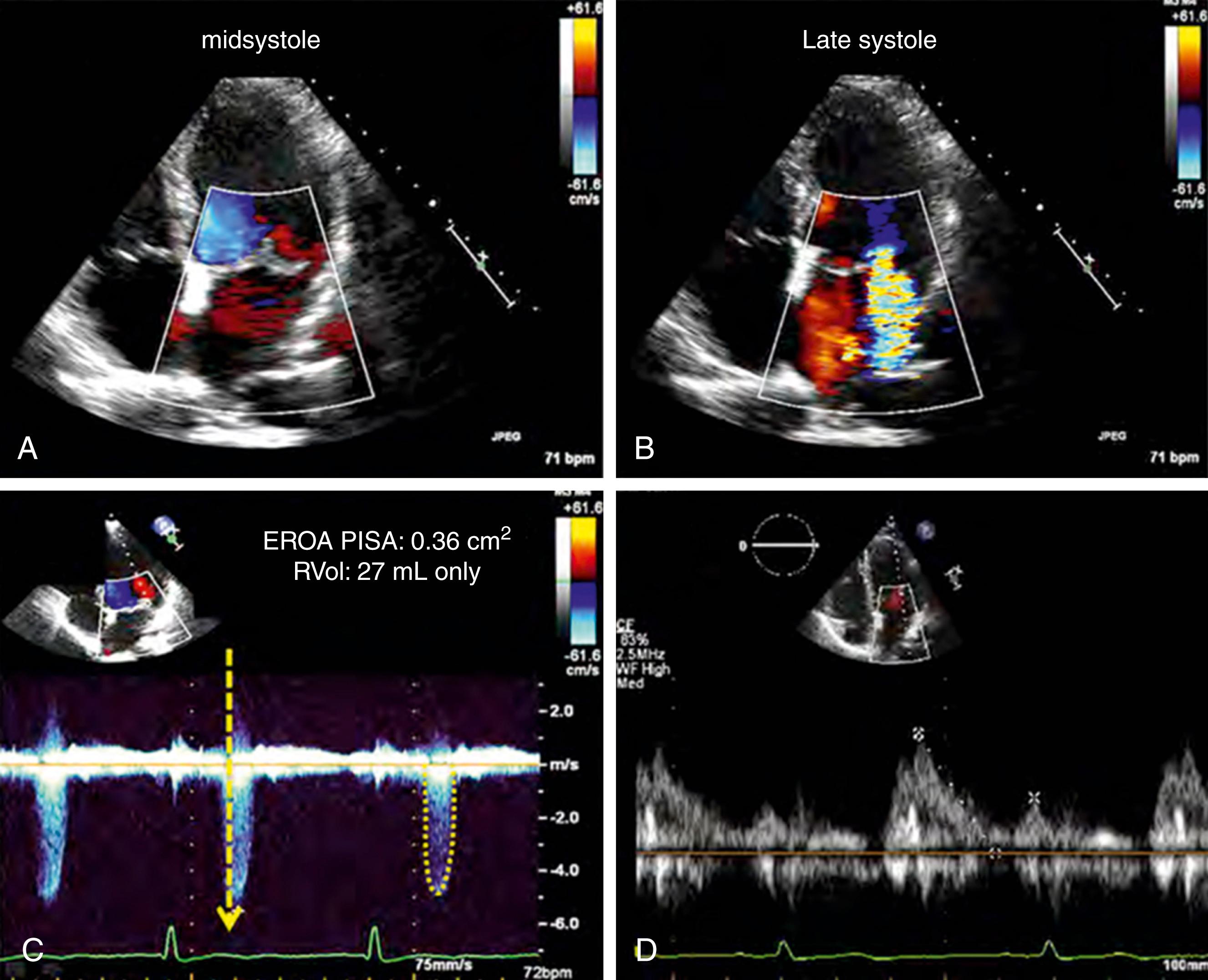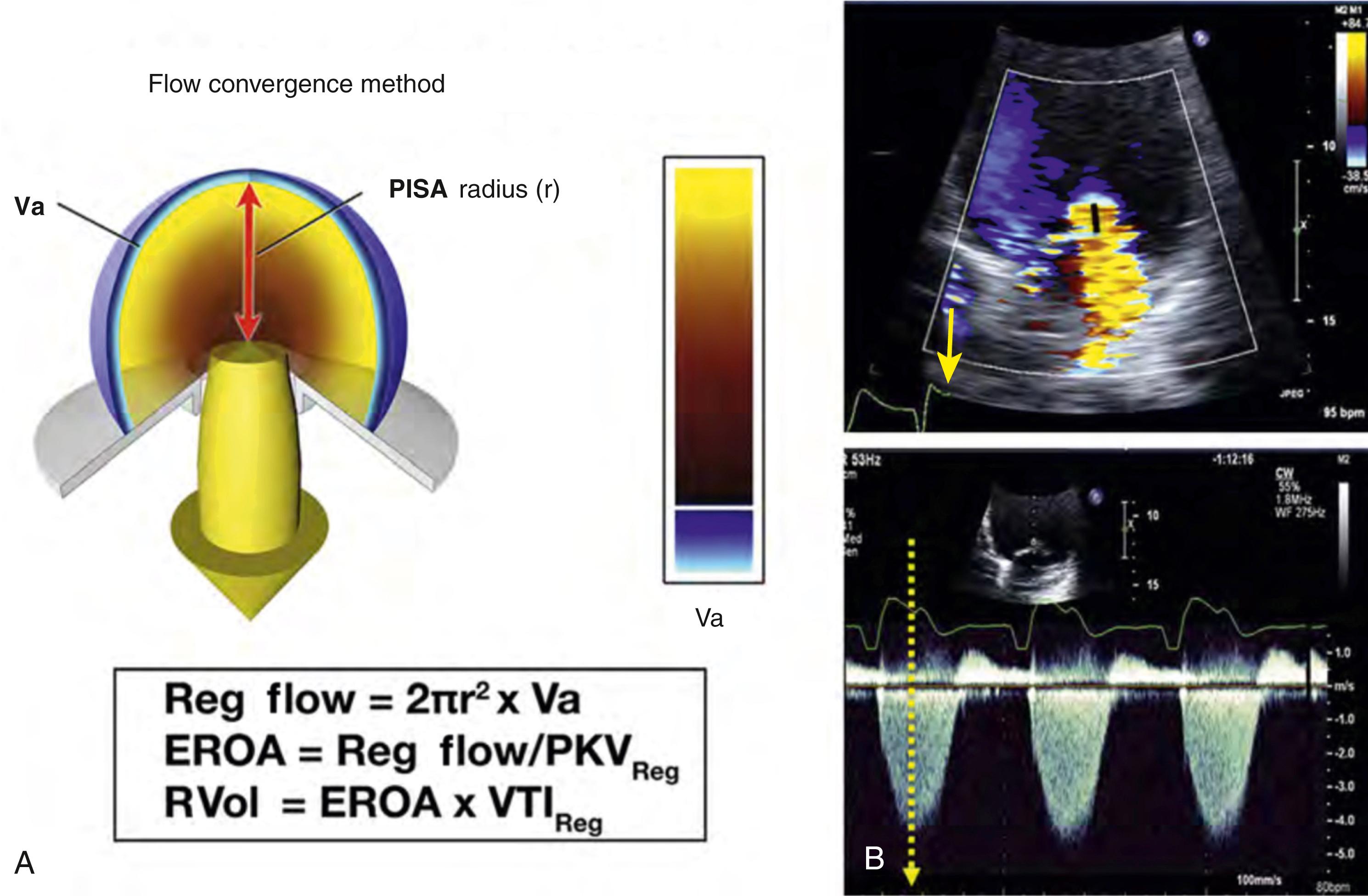Physical Address
304 North Cardinal St.
Dorchester Center, MA 02124
Mitral regurgitation (MR) is the most common valvular disease in the developed world and is expected to increase with the aging population. Primary MR is caused by an intrinsic valve abnormality (usually degenerative mitral valve [MV] disease), whereas secondary (functional) MR occurs in the setting of left ventricular (LV) remodeling, mitral annular dilatation, or both. Numerous studies have shown that untreated, severe MR is associated with poor outcomes because of adverse remodeling of the left ventricle. Among patients with flail MVs and severe MR, 90% were dead or required surgery at 10 years follow-up in a multicenter study.
Transthoracic echocardiography (TTE) with Doppler is the initial recommended modality for MR evaluation. The role of TTE is to identify the cause of MR, quantify the lesion severity, assess the response of the LV to volume overload, and determine the feasibility of durable repair. Detailed assessment of the MV anatomy, including annular and subvalvular structures (chordae and papillary muscles), need to be well described on TTE. Severe MR rarely occurs when the MV leaflets or apparatus or LV structure or function are normal.
The most recent 2017 American Society of Echocardiography (ASE) guidelines for native valvular regurgitation recommend integrating multiple parameters because all of the proposed indices have intrinsic limitations, mainly because of the complex geometry of the mitral orifice. It is important to recognize that the data obtained from imaging studies need to be interpreted in the context of the clinical presentation and physical examination.
Semiquantitative methods. There are multiple semiquantitative parameters derived from TTE when assessing the severity of MR. These parameters include color-flow Doppler (with its three components: flow convergence, vena contracta, and jet area) ( Fig. 98.1 ), MR signal intensity, transmitral flow, and pulmonary venous flow pattern.

Quantitative methods. Quantitative assessment uses either the proximal isovelocity surface area (PISA)–derived effective regurgitant orifice area (EROA) or the Doppler-volumetric method. The development of three-dimensional echocardiography (3DE) has improved the assessment of MR by measuring the vena contracta area (VCA the narrowest, highest-velocity region of the jet flow), which is a direct measure of the EROA, although data relating different cutoffs to outcomes are not yet available. Its advantages lie in overcoming the limitations that can be posed by a noncircular orifice.
Impact of hemodynamics on MR evaluation. Hemodynamic condition such as blood pressure and the duration of MR can have significant effect on the accuracy of MR severity assessment. This is particularly relevant when using color-flow Doppler as a solo method for assessing MR severity. The high driving pressure of a hypertensive LV can lead to a larger jet area without increase in MR volume because color Doppler displays velocity and not flow ( Fig. 98.2 ).
![Figure 98.2, The images are from two patients with functional ischemic mitral regurgitation (MR) caused by posterior leaflet restriction, left ventricular ejection fraction of 30%, and similar appearance of eccentric MR jets directed laterally but different regurgitant volumes. The patient in the top panels has a low MR velocity (4.1 m/s) consistent with low blood pressure (BP) and/or elevated left atrial pressure, with moderate MR (regurgitant volume [RVol], 42 m). The patient in the lower panels has a peak MR velocity of 6.4 m/s because of hypertension but with mild MR (RVol,17 mL). Alas V, Aliasing velocity; EROA, effective regurgitant orifice area; vel, velocity. Figure 98.2, The images are from two patients with functional ischemic mitral regurgitation (MR) caused by posterior leaflet restriction, left ventricular ejection fraction of 30%, and similar appearance of eccentric MR jets directed laterally but different regurgitant volumes. The patient in the top panels has a low MR velocity (4.1 m/s) consistent with low blood pressure (BP) and/or elevated left atrial pressure, with moderate MR (regurgitant volume [RVol], 42 m). The patient in the lower panels has a peak MR velocity of 6.4 m/s because of hypertension but with mild MR (RVol,17 mL). Alas V, Aliasing velocity; EROA, effective regurgitant orifice area; vel, velocity.](https://storage.googleapis.com/dl.dentistrykey.com/clinical/QuantificationofMitralRegurgitation/1_3s20B9780323698306000985.jpg)
MR duration. The duration of MR is also important, especially in the setting of MV prolapse, in which predominant late systolic MR may occur with a large regurgitant jet that is only present for a fraction of systole. A large jet that appears late in systole may result in a larger EROA but with a small regurgitant volume ( Fig. 98.3 ). All single-frame measurements such as jet area, vena contracta width, or PISA should be used only cautiously when MR is not holosystolic.

As flow approaches a circular orifice, concentric hemispheric shells of increasing velocity and decreasing surface area form proximal to the orifice. With color Doppler imaging, the hemispheric shells proximal to the regurgitant orifice area can be identified and the radius (r) measured at appropriate aliasing velocity (Va). An important consideration is that the measurement of the PISA radius should be performed at the time of the peak MR velocity by continuous-wave (CW) Doppler. The squared radius is then used to calculate the surface area (2 π r 2 ) of the hemisphere. Thereafter, the mitral regurgitant flow (MRF, in mL/s) can be calculated by multiplying the area of the shell by the aliasing velocity:
The maximum effective regurgitant orifice area (EROA, in cm 2 ) can then be derived by dividing the mitral regurgitant flow by the corresponding peak MR velocity (in cm/s) based on the conservation of mass law. If the regurgitant orifice area is constant throughout systole, the regurgitant volume can be calculated as the product of EROA and the velocity time integral (VTI) of the MR jet ( Fig. 98.4 ).

One caveat to this method is that it assumes a hemispheric shape. When the orifice is noncircular (as is typically seen with functional MR), the PISA method may underestimate EROA. In addition, proper CW Doppler alignment with the MR jet is needed because poor alignment can result in underestimation of the peak velocity and an overestimation of EROA. This method has been widely used and validated in numerous studies, with a cutoff of 40 mm 2 or greater carrying an independent prognostic marker for poor outcomes in asymptomatic patients.
Become a Clinical Tree membership for Full access and enjoy Unlimited articles
If you are a member. Log in here